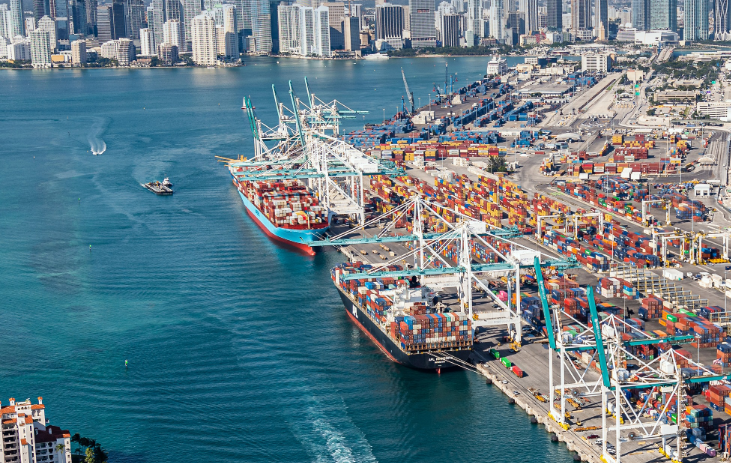
Trump: A Blessing in Disguise for Latin America
Trump’s second term could paradoxically present significant opportunities.
BY DIEGO RODRÍGUEZ
Donald Trump’s second term in office is a topic of global interest. While his return to the White House may seem alarming to many, particularly in Latin America, it could paradoxically present significant regional opportunities.
By analyzing Trump’s behavior patterns, policy priorities, and the US context, AMI can demystify what’s to come in 2025 for Latin American companies to boost trade, support local industries, and strengthen their position in global markets. Here are reasons why Trump’s second term might be a blessing in disguise for Latin America.
1. Trump’s Pattern of Overpromising and Underdelivering
Donald Trump’s campaign rhetoric is often aggressive, but history has shown that his policies are frequently less severe than promised. His first term demonstrated a pattern of bold proclamations followed by diluted implementation. This tendency to overpromise and underdeliver will likely continue in a second term. For Latin America, this means that while Trump may threaten severe tariffs, sanctions, or trade restrictions, the policies enacted could be far less detrimental.
For example, during his first presidency, Trump’s fiery campaign talk about building a wall along the U.S.-Mexico border resulted in limited construction and mostly symbolic changes. Similarly, his threats to dismantle NAFTA led to the United States-Mexico-Canada Agreement (USMCA), a renegotiation rather than a complete overhaul. Latin American nations should prepare for intense rhetoric but recognize that actual policy outcomes may be more manageable.
2. Trump’s Need for Quick Wins and Dealmaking
One of Trump’s defining characteristics is his love for high-profile, quick wins that generate media attention and rally his support base. This inclination toward headline-grabbing deals will likely shape his approach to international relations, particularly in the first 100 days of his second term.
Given his history as a dealmaker, Trump may target Mexico, Canada, China, and Brazil for early trade victories. Mexico and Brazil, as two of Latin America’s largest economies, could be in a prime position to negotiate favorable deals that deliver mutual benefits. For instance, Trump may seek to reduce trade deficits or increase American exports, but in return, these countries could secure concessions on tariffs, market access, or investment incentives replacing Chinese goods.
3. Inflation and Targeted Tariffs
Trump’s path to re-election could be partly attributed to frustration over inflation during the Biden administration. To address these economic concerns, Trump will likely focus on tariffs on intermediate and capital goods rather than consumer goods. This approach would minimize the impact on consumer prices, addressing inflation without sparking public outrage.
However, this strategy could create concerns for countries like Mexico and Brazil, which have sophisticated manufacturing sectors and run trade surpluses with the U.S. Yet, opportunities exist even in the face of targeted tariffs. For example, if Trump’s policies limit Chinese imports, Latin American manufacturers could fill the void.
4. Combating Chinese Goods and the “Backdoor” Risk
One of Trump’s key priorities will likely be curbing China’s influence on the global supply chain and Latin America. This means cracking down on goods made with Chinese components, regardless of where they’re assembled. Latin American nations need to be cautious here to avoid becoming collateral damage in Trump’s trade war with China.
However, this policy focus also presents an opening. By promoting local manufacturing and the development of a regional supply chain free from significant Chinese involvement, Latin American countries can position themselves as trusted partners for the U.S.
5. The De Minimis Loophole and E-commerce Opportunities
Americas Market Intelligence (AMI) estimates that in 2024, China will export $55 billion in low-value e-commerce products to the U.S., largely through platforms like Temu, Shein, and Aliexpress. Trump’s likely elimination of the de minimis loophole, which allows low-value packages to enter the U.S. duty-free, will hit Chinese sellers hard.
This opens a clear opportunity for Latin American exporters, especially in categories like fashion and activewear. Countries like Colombia, Mexico, and Brazil, known for their textile and garment industries, can seize this moment to increase their share of the U.S. market. By positioning their products as competitive alternatives to Chinese goods, Latin American businesses can expand their reach and benefit from the changing trade landscape.
Conclusion
A second Trump term may seem daunting, but it could be a period of unexpected opportunities for Latin America. Logistics providers could boost revenues by offering tailored services to help medium and large-sized corporations navigate the complexities of exporting to the U.S. Whether ensuring compliance with new trade regulations or optimizing international and domestic transportation costs; logistics companies can enable Latin American businesses to thrive in the evolving market.
By understanding Trump’s behavior patterns, his focus on quick wins, and his likely policies on tariffs and trade, Latin American companies can strategically position themselves for growth. From seizing e-commerce openings to navigating Chinese trade restrictions and benefiting from market access, Latin America has the potential to turn Trump’s presidency into a catalyst for economic advancement. The key will be preparation, adaptability, and strategic insights– turning challenges into opportunities and rhetoric into results.
Diego Rodríguez is the Director of the logistics and industrial practice at Americas Market Intelligence, handling dozens of market analysis and competitive intelligence studies throughout Latin America. He has also served as a consultant to more than 20 multinational companies.
This article was originally published by Americas Market Intelligence. Republished with permission from the author.
RELATED ARTICLES
Trump Tariff Would Violate USMCA, LatAm FTAs
Impact of Second Trump Presidency on Latin America
Trump and Latin America: Winners & Losers
Fitch Warns of Trump Risk for Latin America
Latin America Most Exposed to Trump Risk
Moody’s Analytics: Trump Tariffs Would Cut Mexico Growth












